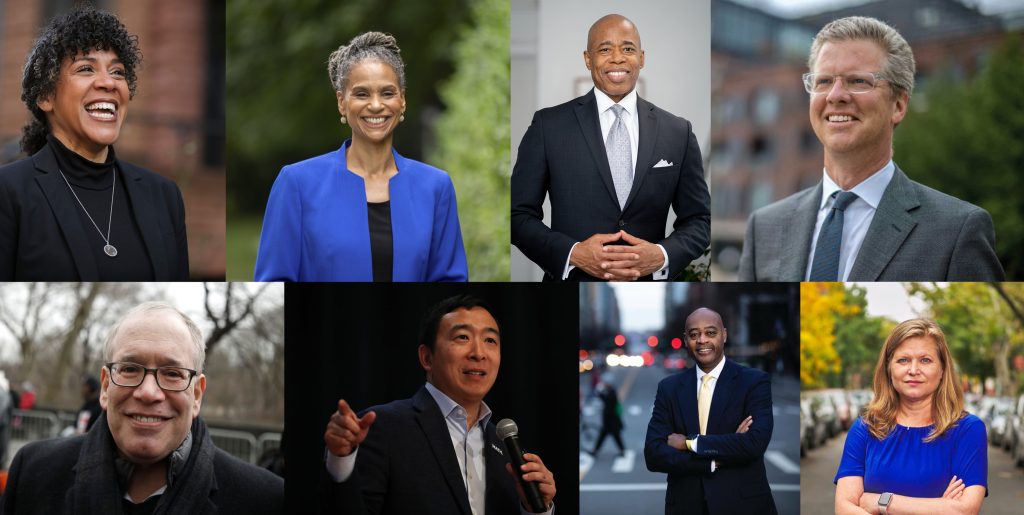New York City is heading into one of its most consequential elections in decades. And the pool of mayoral candidates, which once seemed impossibly large, has narrowed to a handful of hopefuls who have both the name recognition and financial resources to realistically secure the nomination. With June’s primary looming, their previously broad platforms are coalescing into more specific policies.
If members of New York’s arts community aren’t paying close attention to the race, they should be. The mayor can have a huge impact on everything from public art and arts education to funding for institutions like the Met and the Brooklyn Museum.
It should be noted that many aspects of city governance have a direct impact on artists and art workers (think: housing, taxes, education, childcare… the list goes on). But for the purposes of this inquiry, we asked eight leading Democratic candidates to spell out their specific proposals for arts and culture in New York City. (The city is overwhelmingly Democratic, meaning one of the names below is likely to become the next mayor.)
Here are their responses. In the event that a candidate did not reply, we drew from their published policy plans and previous track records.

New York City Sanitation chief and mayoral candidate, Kathryn Garcia, speaks at a rally in Times Square on December 15, 2020. Photo: Alexi Rosenfeld/Getty Images.
A spokesperson says Garcia’s local economic recovery plan, which the campaign just released—
Reopen to Stay Open—is “focused in large part on providing support for NYC’s arts and culture industries.” Highlights of the
former Commissioner for the New York City Sanitation Department’s plan include:
- Expanding public spaces to give artists and art organizations a bigger footprint in their communities. “Kathryn recognizes the success of outdoor dining (and the way it was stood up practically overnight) and aims to apply the model wider—to create opportunity for thousands of pop-up theater performances, art installations, and commercial markets,” the spokesperson says. To do so, she would reform the concessions and public-art permitting process to unlock hundreds of thousands of square feet of public space.
- Developing a partnership with streaming services to livestream On and Off Broadway shows and other performance art to bring New York theater into the homes of all New Yorkers
- Giving all local businesses (including art galleries) a full year of fine and fee relief during the first year of the administration and launching a Small Business Block Party series in every borough
- Launching RediscoverNYC, a campaign encouraging New Yorkers to visit the beautiful parts of the city they have never been to

New York City Mayoral candidate Ray McGuire on March 18, 2021 in New York City. Photo by David Dee Delgado/Getty Images.
The former Citigroup vice chairman Ray McGuire has a long history supporting the arts through private philanthropy and has, for years, been an avid collector and board member at the Studio Museum in Harlem and the Whitney Museum of American Art. A spokesperson for his campaign said the candidate is in the process of “developing robust policy plans to revitalize New York’s arts and cultural sector in the wake of the pandemic.”
McGuire’s initial policy ideas include:
- Creating more structure and better coordination across city government by directing individual agency’s to designate one or more staff to focus on integrating arts and arts education. “For example, the Department of Citywide Administrative Services could focus on better leveraging city-owned buildings to provide space for art installations or affordable studio space,” a representative said.
- Ensuring the Department of Small Business Services is focused on supporting small arts and creative businesses that need financial assistance by connecting them with some of the many cultural funding streams in the city
- Protecting and strengthening arts education by requiring the Department of Cultural Affairs and the Department of Education to “facilitate new and expanded partnerships with local arts institutions to procure arts/music equipment, instructors, and space for arts education”
- Creating arts districts and working with leaders of business improvement districts to expand support for arts and arts education
- Developing arts-friendly pedestrian corridors that support cultural storefronts and street performers
- Employing local artists in community improvement projects
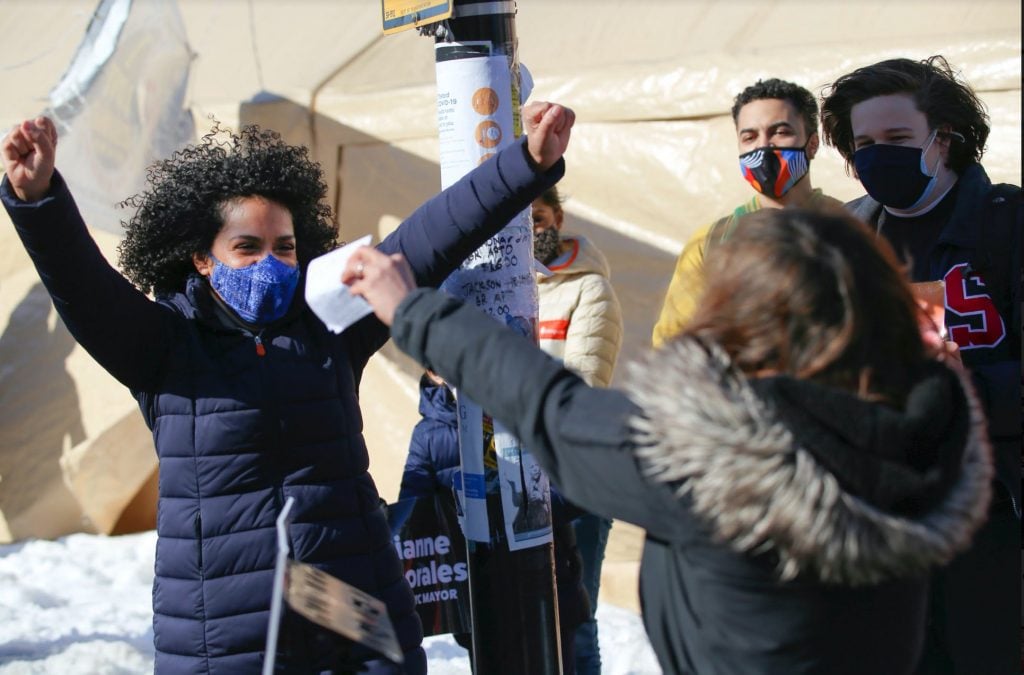
Dianne Morales, 2021. Courtesy of Dianne Morales for NYC.
“Dianne understands that NYC has lost nearly 35,000 jobs in the arts and culture industry since the pandemic began, which has devastated our economy and ravaged an industry that makes New York truly thrive,” a spokesperson for Morales’s campaign tells Artnet News. Morales wants to “prioritize supporting theaters and museums and their workers,” but also understands the role culture plays in education and mental health. “Her daughter was struggling until she found the arts in school so it’s something Dianne is very in tune with,” the spokesperson adds.
Specifics from nonprofit executive Morales’s arts plan include:
- Implementing the Open Culture Program approved by the City Council and permanently institutionalizing the program for years to come
- Strengthening the capacity of Small Business Services, including bolstering a new division specifically for small arts and cultural venues across the five boroughs
- Increasing investment in programs like Curtains Up NYC, which help struggling arts venues apply to federal grants
- Establishing a “New Deal-style program inspired by the Public Works Administration to put artists who have lost their jobs due to the pandemic to work while providing arts education in schools and creating public-facing art.” Funding “could come from taxing the rich at the state level…and by defunding the police in NYC by at least $3 billion.”
- Working with the federal government to gain access to more grant money for programs like Save Our Stages and the Shuttered Venue Operators grant
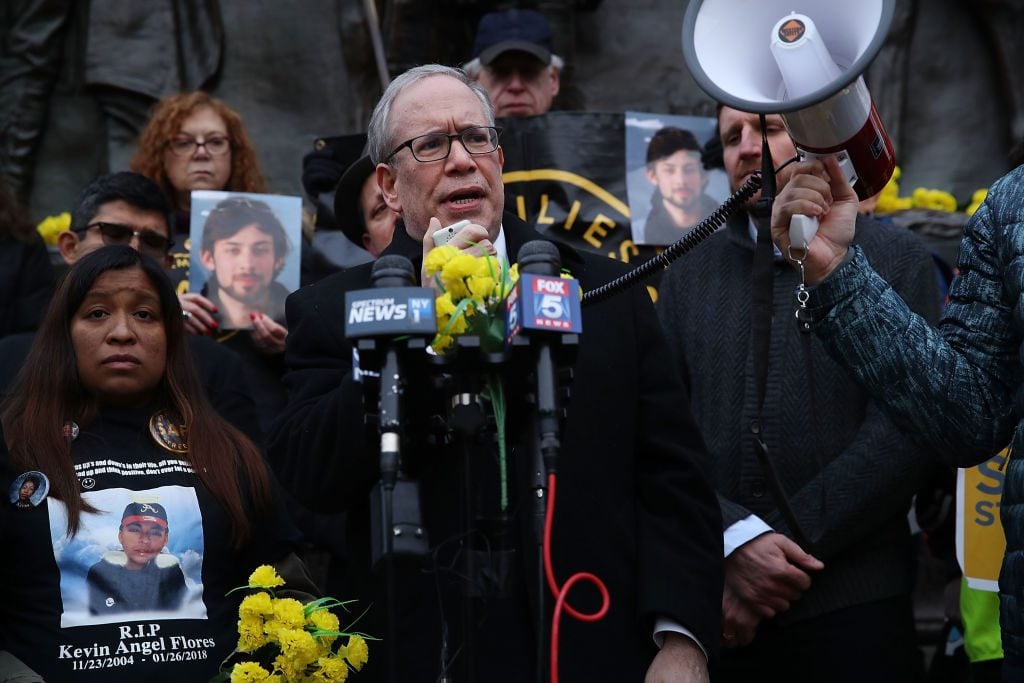
New York City Comptroller Scott Stringer speaks as at a March for Safe Streets on March 12, 2018 in Brooklyn. Photo: Spencer Platt/Getty Images.
“There will be no recovery for NYC without a vibrant arts and culture industry,” a spokesperson for Stringer, New York City’s current comptroller, says. “New York City’s arts, culture, and entertainment are essential to New York City’s future and we need to aggressively focus on stabilizing and growing the industry, while supporting our artist community, as we continue to fight off this pandemic.”
Highlights of Stringer’s plan include:
- Investing in open space and outdoor performances to bring together workers, unions, neighborhood BIDs, open and green space advocates, and other members of the community to hit the ground running. “We should use the full force of the City’s media resources to promote local entertainment in a coordinated way,” the representative says.
- Taking inspiration from the city’s post-9/11 response to purchase over 250,000 tickets for theater performances (not just on Broadway) and distributing those tickets to frontline workers, school children, and others
- Exploring the feasibility of opening access to the Theatre on Film and Tape (ToFT) at Lincoln Center to fund worker relief. “The ToFT should be free and digitally accessible to all New York City residents, and should sell subscriptions to outside the City…to fund a short-term benefit for out-of-work performers and venue workers,” the plan states.
- Developing new partnerships for providing arts exposure to more New Yorkers
- Leveraging City dollars to support the city’s local venues
- Overhauling the Department of Cultural Affairs’ granting process to provide direct assistance to individual artists and grants for operating expenses, as well as investing capital dollars to equipment, not just new venues
- Working with ConEd to expand their nonprofit assistance program, providing lower electricity rates for performance venues, and exploring options for opening up public school gymnasiums and auditoriums so that artists can use them as free and reduced rate rehearsal facilities
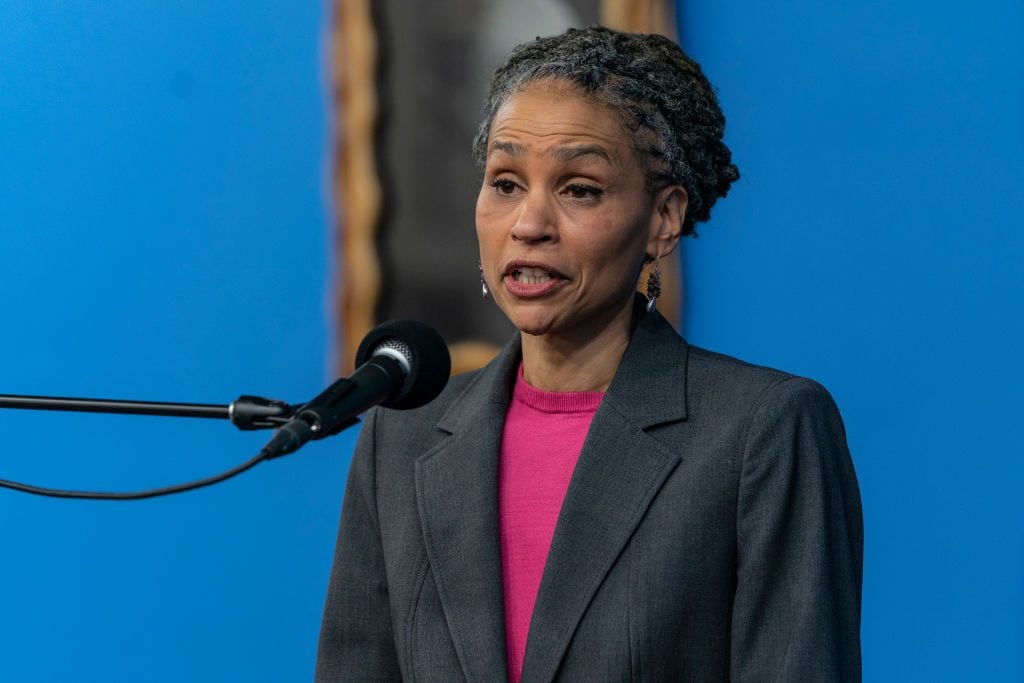
Candidate for mayor of NYC Maya Wiley speaks during Martin Luther King celebration at NAN headquarters. Photo by Lev Radin/Pacific Press/LightRocket via Getty Images.
A spokesperson for the lawyer and civil rights activist‘s campaign points out that support for the arts is included in the candidate’s economic recovery plan, New Deal New York, which prioritizes investment in the city’s infrastructure. “In order to design a recovery that includes everyone, we must recognize that physical infrastructure can and must benefit social, cultural and civic infrastructure,” the spokesperson says. “Physical structures and facilities make it possible for our economy to function, and shared social, cultural, and civic structures enable all of us to fully and meaningfully participate in economic and public life.”
Highlights of Wiley’s arts platform include:
- Designing a “Recovery for Artists and Culture Workers” plan, which would include $1 billion in new spending
- Putting the city’s artists and performers back to work by “providing performance and studio spaces, and through other capital expenditures that support arts and culture in the city”
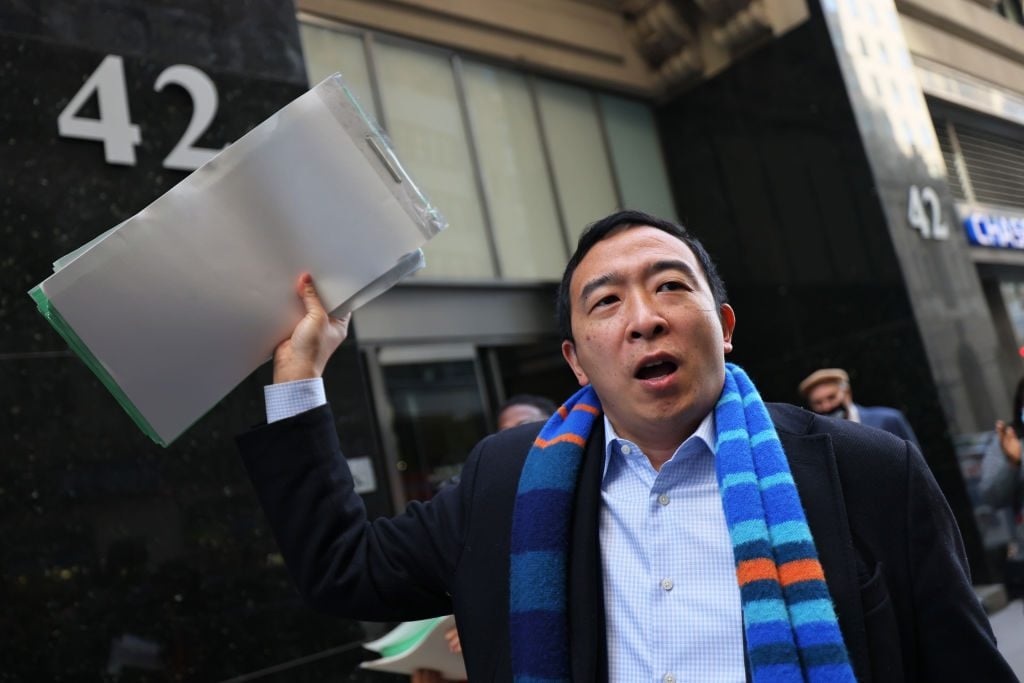
Andrew Yang holds up his campaign’s petition signatures outside the NYC Board of Elections office on March 23, 2021 in New York City. Photo by Michael M. Santiago/Getty Images.
Former presidential candidate and tech entrepreneur Andrew Yang’s campaign did not respond to Artnet News’s request for information, but the “Culture, Society, and Nightlife” section of the candidate’s website details some of his plans for New York’s arts sector. Highlights include:
- Building on the legislation that established the Open Culture program, which temporarily allows eligible cultural and art institutions and venues to use approved open public street space for cultural events. “A Yang administration would look to make this program permanent and would promote performances through our NYC App so all New Yorkers are aware of the happenings in our city,” per the plan.
- Proposing a new program: Broadway to the People, which would give Broadway producers the opportunity to mount theater productions in public parks at reduced fees
- Partnering with larger institutions to help subsidize rent for resident artists in buildings: “These up-and-coming creators deserve a place to cultivate their craft and the city has a role to play in supporting their dreams.”
- Working to attract “content creator collectives, such as TikTok Hype Houses, where young artists collaborate. We need to help create similar artist collectives that utilize new technologies.”
- Turning the city’s bridges, monuments, and buildings into “works of art by hosting vivid projection-mapping displays“
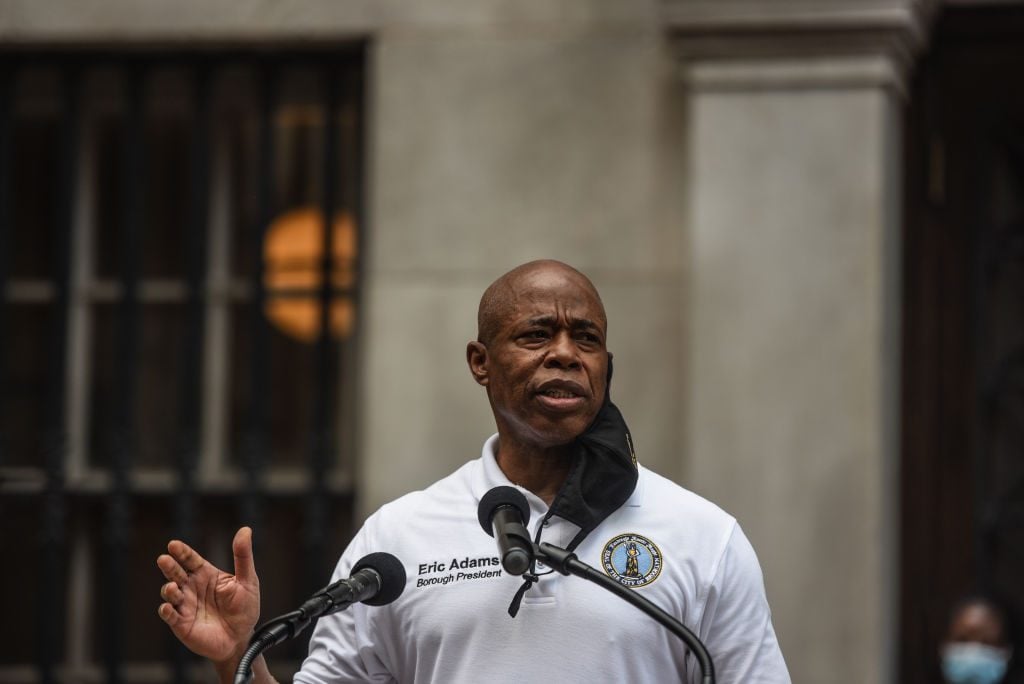
Eric Adams, Brooklyn Borough President, speaks during a Black Lives Matter mural event on June 26, 2020 in Brooklyn. Photo: Stephanie Keith/Getty Images.
The campaign for the former Brooklyn Borough President did not return Artnet News’s request for information on his arts record and there is little detail provided in his platform. His previous involvement with the arts includes:
- Allocating millions in capital funding for Brooklyn arts institutions such as the Brooklyn Botanic Garden and the Brooklyn Academy of Music
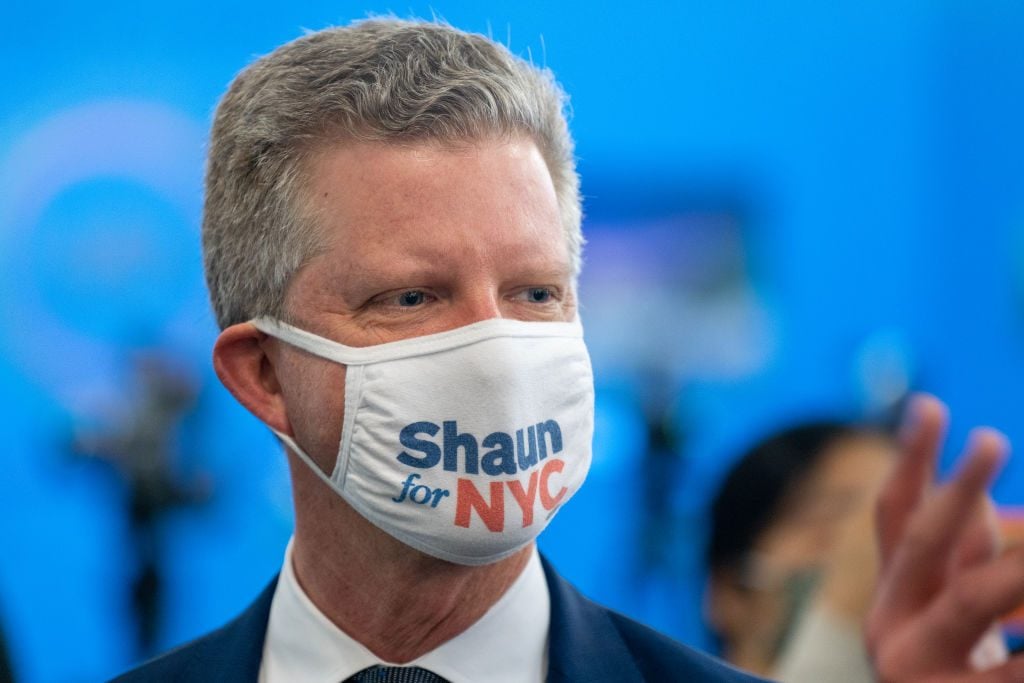
New York City Mayoral candidate Shaun Donovan on March 18, 2021 in New York City. Photo by David Dee Delgado/Getty Images.
“Our current mayor views the arts as synonymous with wealth and elitism, and uses that as an excuse to ignore them,” Shaun Donovan said in a statement upon the release of his Arts and Culture Platform. “I see what the city can be if we actually supported the arts and recognized their benefits, and as mayor I’ll work to make that vision a reality.”
Highlights from the candidate’s plan, which he says “emphasizes that learning about and experiencing art has incredible benefits for individuals regardless of their involvement with the arts as a profession,” include:
- Launching a citywide program to utilize empty spaces for arts and culture initiatives—a plan that would include prioritizing making space available to artists of color and utilizing digital tools to make reserving these spaces easy
- Working with experts to reopen the city’s arts venues and bring audiences back safely, while listening to arts leaders and venue owners to ensure safety considerations are clear, enforceable, and take into account challenges for the businesses
- Rethinking school arts funding and the way the city engages with nonprofit partners to ensure all students are properly exposed to the arts
- Guaranteeing at least one paid job, apprenticeship, or internship opportunity in the arts to every high school student by 2026
- Making affordable housing available to all New Yorkers to make it easier for artists to live in the city, and integrating work spaces to affordable housing, libraries, and other community buildings to make it easier for artists to work near their homes
- Partnering more closely with the private sector to support arts organizations and promote greater involvement in boards of neighborhood arts organizations.
- Utilizing technology to create a “robust digital network of cultural organizations and developing an application to make all these places easily identifiable, connect them to each other through curated ‘walks’ and ‘experiences,’ and tie them to local businesses”
Editor’s note: this article has been updated to include policies from Shaun Donovan and Ray McGuire.
